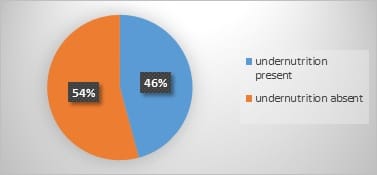Prevalence of under nutrition and associated factors among female higher secondary students in the schools of costal block panchayat in Kerala
Raj Eliza S.1*, Nisha R S.2, Philip S.3
DOI: https://doi.org/10.17511/ijphr.2019.i2.02
1* Sharon Raj Eliza, Senior Resident, Department of Community Medicine, Government Medical College, Kottayam, Kerala, India.
2 Nisha R S, Professor and Head, Department of Community Medicine, Government Medical College, Idukki, Kerala, India.
3 Sairu Philip, Professor and Head, Department of Community Medicine, Government TD Medical College, Alappuzha, Kerala, India.
Introduction: The health status of an adolescent determines the health status in her adulthood. Adolescent girls in the age group 15-19 years are closer to their mother hood and thus the low birth weight girls become the next generation of stunted mothers thus, perpetuating the vicious cycle of malnutrition. Objectives: 1) To determine the prevalence of under nutrition among female higher secondary students in the schools of Ambalapuzha block. 2) To determine the factors associated with under nutrition. Methods: Cross- sectional study was conducted among higher secondary female students in the schools of Ambalapuzha Block. Sample size was calculated using the formula Zα2PQ/L2 (Zα -1.96, P -33, Q -67 L -12% of P). Considering design effect (1.5) and 10% non-response, 559 adolescents were studied. Stratified and cluster sampling method was used. Information was collected using semi structured questionnaire. Weights and heights were measured and body mass index calculated and compared with Tim Cole anthropometric standards. Results: Prevalence of under nutrition was found to be 45.8% .Factors associated with undernutrition were Hindu religion, nuclear family, father manual laborer or fisher man and absence of media influence on nutrition. Father being a manual laborer or fisherman was found to be an independent predictor of under nutrition. Conclusion: Prevalence of under nutrition was found to be high among female higher secondary students in Ambalappuzha Block
Keywords: Nutritionl value, Adolescence, Nutritional deficiencies
| Corresponding Author | How to Cite this Article | To Browse |
|---|---|---|
| , Senior Resident, Department of Community Medicine, Government Medical College, Kottayam, Kerala, India. Email: |
Eliza SR, Nisha RS, Philip S. Prevalence of under nutrition and associated factors among female higher secondary students in the schools of costal block panchayat in Kerala. Public Health Rev Int J Public Health Res. 2019;6(2):53-60. Available From https://publichealth.medresearch.in/index.php/ijphr/article/view/100 |


 ©
© 